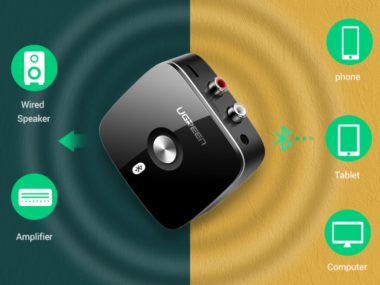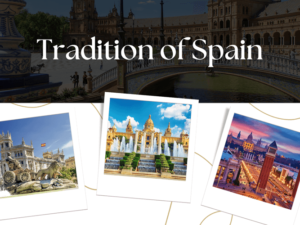Introduction
Captivating visual content is critical in engaging and motivating viewers in the world of travel blogging. The potential of graphics to transport viewers to stunning locales, share immersive experiences, and express the spirit of a place is strongly reliant on their power. While static photographs have long been the preferred medium for travel bloggers, the advent of image-to-video methods has opened up an entirely new universe of possibilities.
Finally, with the proliferation of video-sharing platforms and the growing popularity of video content among consumers, image-to-video solutions have become a great asset for travel bloggers.
Selecting the Right Images for Video Conversion
To make interesting vacation videos using image-to-video conversion, carefully curate and select the perfect photos. Here are some pointers to help you choose the best photographs for your video conversion project:
- Composition: Look for photographs with good composition and visual appeal. To construct visually appealing frames, consider aspects such as leading lines, symmetry, and the rule of thirds.
- Emotion and Storytelling: Select photos that elicit emotions while also presenting a tale. Look for images that capture the essence of the place or express a sense of adventure, peacefulness, or excitement.
- Variation: Make an effort to be diverse in your image selection. To establish visual appeal and a well-rounded narrative, use a variety of wide-angle images, close-ups, landscape panoramas, candid moments, and details.
- Image Quality: High-resolution images with appropriate lighting, sharpness, and clarity should be prioritized. Images that are fuzzy, pixelated, or contain distracting characteristics should be avoided.
- Photographs with Unusual viewpoints: Look for photographs with unusual viewpoints or angles. This might give your videos a unique and fresh look.
- Vibrant Colors: Images with bold and eye-catching colors can make your videos aesthetically appealing. Look for photographs that highlight the destination’s natural beauty and color palette.
- People and Culture: Including photographs of people, cultural events, or interactions can give a human touch to your documentation and provide a deeper connection to the location.
- Iconic Landmarks: Choose photographs that depict well-known sites or recognizable emblems of the destination. These images can assist viewers in identifying the region and creating a sense of familiarity.
- Sort and Categorise: Divide your photographs into categories or themes based on location, subject, or chronological order. This will help to speed up the video production process and provide a consistent narrative flow.
- Image Editing: Image editing entails adjusting brightness, contrast, and saturation, as well as cropping and straightening photographs as needed. However, avoid over-editing that affects the photo’s natural spirit.
- Consistent Style: Ensure that the color balance, tone, and general look of your photos remain cohesive throughout your video.
By adhering to these standards, you may carefully compile a collection of photos that work in tandem to make visually appealing and interesting trip videos.
Enhancing Videos with Transitions, Effects, and Music
When it comes to convert photos to videos, there is a plethora of tools and software at your disposal. Each tool has its own set of features, benefits, and drawbacks. Whether you value ease of use, advanced editing features, or specialized integrations, the proper tool will enable you to transform your photographs into amazing vacation videos.
Once your photographs have been converted to video format, the next step is to improve the visual appeal and storytelling of your vacation movie by integrating transitions, effects, and music. Let’s look at how you can use each of these elements to make a very captivating vacation video.
- Smooth Transitions for a Seamless Experience:
Transitions serve as links between images, ensuring a smooth and seamless transition from one graphic to the next. You can utilize a variety of transitions, including fades, dissolves, slides, and even creative transitions like zooms and rotations. Choose transitions that fit your video’s atmosphere and theme, and use them sparingly to keep it looking natural and finished.
- Utilizing Effects to Enhance Visual Appeal:
Effects can be utilized to increase the visual interest and impact of your vacation film. They can be as subtle as color grading or as dynamic as overlays, motion graphics, or animated text. Experiment with various effects to find the ones that match the style of your video and enrich the message you’re delivering.
- Selecting Appropriate Music to Set the Mood:
Music can be used to set the tone, mood, and general ambiance of your vacation film. It can elicit emotions, invoke nostalgia, or bring vitality and excitement to the sights. Consider the destination, the narrative you want to express, and the feelings you want to elicit in your audience while choosing music. Select music that complements the speed, ambiance, and theme of your video.
It’s crucial to remember that transitions, effects, and music should always be used to enhance the storytelling and immerse the viewer in the travel experience.
Editing and Final Touches
After converting your photographs to video format, the editing stage allows you to fine-tune and polish your journey movie to ensure it meets the highest quality requirements.
- Color Correction: Changing the color, saturation, and white balance of your photos can bring out their true essence and provide a consistent aesthetic across the video. To achieve a visually appealing output, correct any color discrepancies or temperature concerns.
- Brightness and contrast: Properly tweaking the brightness and contrast levels will improve details and make your movie more aesthetically appealing. Aim for a balanced and lively appearance by avoiding overexposed or underexposed parts.
- Sharpness and Clarity: Using the right sharpening techniques, you may make your video look crisp and distinct. Over-sharpening, on the other hand, may generate undesired artifacts or noise.
- Resolution: To guarantee visual clarity, ensure that your video is exported at an adequate resolution. Consider the platform or medium on which the video will be displayed and select a resolution that meets its specifications.
- Aspect Ratio: Choosing the proper aspect ratio is critical to avoid stretching or black bars. For social media platforms such as Instagram, the most prevalent aspect ratios for videos are 16:9 (widescreen) and 1:1 (square).
- Transition Effects: To create a visually appealing flow, use smooth and seamless transitions between images. Avoid abrupt cuts and experiment with different transitions such as fades, slides, or dissolves to discover the best solution for your video.
- Timing & Pacing: Pay attention to the duration of each image and make sure your video’s pacing matches the atmosphere and narrative. Shorter lengths for dramatic periods and longer lengths for contemplative scenes can improve the overall watching experience.
You can improve the quality and aesthetic appeal of your travel film by using these basic editing techniques. Remember to keep the colors, brightness, and contrast consistent throughout the video.
Optimizing and Sharing Travel Videos
After putting in the time and effort to create a beautiful vacation film, it’s critical to optimize and promote it properly in order to maximize its impact and reach.
- Optimal Format and Parameters: When exporting your travel video, select the right file format and parameters to ensure platform compatibility. MP4 is a widely accepted format but check the platform requirements.
- Compression: Compressing your video helps reduce file size while maintaining quality. To achieve a balance between file size and visual quality, use video compression methods or software.
- Social Media Sites: To promote your vacation films, use major social media sites such as YouTube, Instagram, Facebook, and TikTok. Each platform has its own set of strengths and demographics, so pick the ones that correspond to your target audience and the type of your content.
- Personal Blog or Website: Consider integrating your trip films directly on your platform if you have a personal blog or website. This gives your readers a more immersive experience and encourages them to explore more of your content.
- Engaging Titles and Descriptions: Create captivating titles and descriptions for your trip videos that will capture viewers’ interest and entice them to click and watch.
- Hashtags and Keywords: To boost discoverability, include relevant hashtags and keywords in your video descriptions and social media posts. Investigate popular hashtags in the travel industry and employ them strategically.
- Cross-Promotion and Collaboration: Work with other travel bloggers, influencers, or content providers to cross-promote each other’s videos. This broadens your audience reach and exposes your content to new audiences.
- Engage with Your Audience: Encourage people to share, like, and comment on your vacation videos. To increase engagement and loyalty, respond to comments, ask questions, and establish a sense of community.
You may increase the visibility and impact of your content by optimizing your travel videos for performance, selecting appropriate channels, and adopting effective promotion techniques. Remember to check engagement metrics, monitor analytics, and adjust your strategy based on audience preferences and feedback.
Conclusion
In this blog post, we looked at image-to-video approaches and how they might help you improve your trip material. The advantages of image-to-video approaches are obvious: they enable you to generate aesthetically appealing travel material, immerse your audience in your travels, and tell fascinating stories that engage with your audience.
So, embrace the power of image-to-video technology, let your imagination run wild, and let your travel material shine through mesmerizing videos that take your audience to enticing destinations all over the world. Happy traveling and making!











